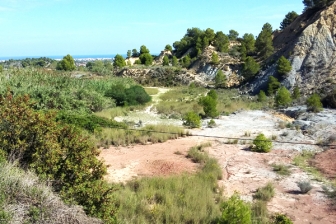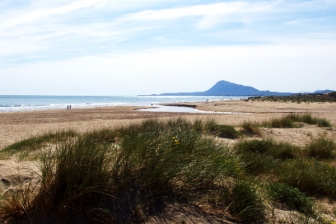Oliva (ES)
The Synthetic Site Folder and Site Brief are available for free.
Please register and login to access the Complete Site Folder.
- Synthetic site folder EN | ES
- Site Brief EN | ES
- Site on Google Maps
- Back to map
Data
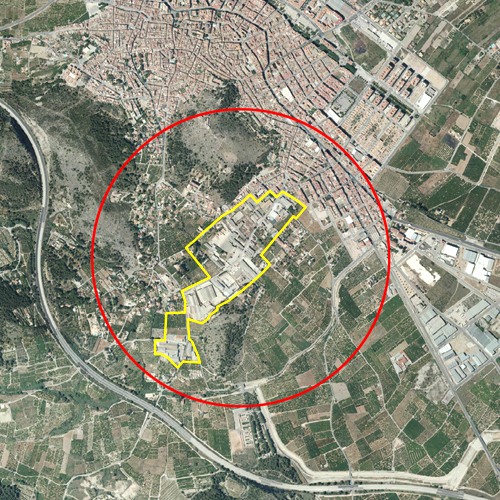
Project scale XL/L - territory / urban + architecture
Location Els Rajolars, Oliva, Valencia
Population 25,789 inhabitants
Strategic site 229.46 ha - Project site 17.73 ha
Site proposed by Community of Valencia, City Council and Oliva City Council
Actors involved Community of Valencia, City Council and Oliva City Council
Owner of the site Private ownership
Commission after competition Viability strategic plan
Team representative Architect - urbanist - landscaper
More Information
How can the site contribute to a productive city?
Oliva City Council, in response to the future challenges for its urban planning, wants to regenerate the Southern edge of its main urban core, an area known as "Els Rajolars", and employ various transport modes to improve its connection with the rest of the municipality and the different supramunicipal transport grids. The site is an old and largely abandoned industrial zone, with a powerful identity projected by former brick factory equipment and facilities (heritage-listed chimneys, kilns, large drying areas and buildings). This urban area, planned for residential usage, is in a strategic location: a transition zone between the city and the market gardens, and also between the city centre and the important natural mountain environment. It is also close to urban areas with serious vulnerabilities (the old town, La Carrasca), making it an alternative development zone for Oliva.
City strategy
The municipality wishes to transform this degraded part of Oliva, taking into account the identity of the site and its surroundings, to generate a productive urban fabric. The traditions and location of this area make it perfect for the promotion of functional diversity (residential-productive). Proposed innovations should be linked to the municipality’s main traditional production sectors (agriculture, derivatives from agriculture and industry) with a view to the diversification of the production and labour market, currently heavily dependent on the service sector. Oliva City Council is looking for new feasible urban dynamics which apply economic and environmental sustainability criteria, respect for the area’s architectural and engineering heritage, a mix of uses, citizen participation and encouragement of high-performance job training.
Site definition
The advantageous geographic location of Oliva has helped it to attract new ideas for future development, most of them linked to leisure and tourism. It benefits from the macro-infrastructure of Valencia and Alicante (harbours, airports, services, etc.), both an hour's drive away. Oliva is also located at a central point midway between two district capitals, Gandía and Denia, 30 minute’s drive away, and it is the gateway to hinterland districts.
In the 1950’s, this site began to be used by several brick factories which supplied the building sector, and eventually became a large “industrial estate”. When the Master Plan was ratified in 1982, most of the ceramic factories were still in operation. However, envisaging their potential decline, this Plan outlined a transition mechanism for the area that permitted the continuity of the industries until their closure, at which point they would be transformed into residential land for free-standing homes.
At present, only one factory is still producing ceramic material. Small-scale initiatives (workshops, caravan parking zones, cooking, etc.) have been installed in precarious conditions on another. The aim of the Master Plan has thus not been achieved: most of the land is now abandoned, with a profusion of old industrial buildings in ruins or in a very poor state, large expanses of unused land where building materials were formerly dried and stored, ten heritage-listed chimneys, several industrial kilns, old abandoned houses and others still in use, some of them of some architectural interest.
How is production inserted in the urban diversity programme?
The City Council is aware of the different demands of the property owners in the area, and intends to steer the conjunction of interests of stakeholders who could become involved, with a view to inserting production in the urban programme.
The action programme should respond to the basic issues that underpin the objective, the way it is put into practice, and assess the possibility of an initial implementation in the form of an emblematic project.
The aim is to decide what kinds of activities can be implemented in this area (and therefore the city) with a view to improving relations between citizens, taking into account their social roots. Other goals involve making the productive territory habitable, generating a residential environment and managing the tensions potentially generated by the new relations between production and urban life, integrating all the production cycles in the local and regional context, and articulating them on a larger eco-scale.
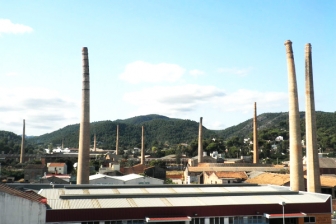 Ceramic product factories: Ladrillares
Ceramic product factories: Ladrillares
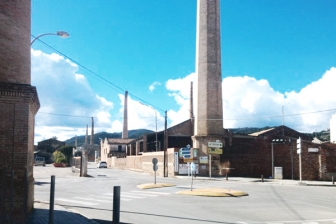 Main vertebral axis of the Paseo de Ladrillares
Main vertebral axis of the Paseo de Ladrillares
Questions on the site
Are there any clay mines on the site area? Where is the clay which is recently under production on the site being mined?
The zone of old mines near the project area has been restored mainly making terraces for agricultural use (plantation of orange Cf. circle 1 on the plan added to complete site file: ES-OLIVA-C-M2. Claymines.pdf
Most of the mines in disuse are abandoned from and by the closure of the activity. It is a challenge to recover with restitution. Cf. circles 2, 3 and 4 on the plan added to complete site file: ES-OLIVA-C-M2. Claymines.pdf
The only mine in use is linked to the production of the FangCuit factory. Cf. circle 5 on the plan added to complete site file: ES-OLIVA-C-M2. Claymines.pdf.
This site is connected to the following theme
IMPLANTING IMPLANTING Productive uses
Productive uses
Ensuring the cities to be both productive and sustainable, they have to interlink resources, mobilities and conditions of fairness so that to create new dynamics according two aspects: productive milieus and productive uses.
Uses can become productive if they go beyond their own functional limitations: productive uses work as a trigger that can initiate dynamics of change in a way that transforms the surrounding environment. They are a response to a situation in which an absence of dynamics has led to a powerful "use-ambition", the demand for a credible programme, a catalyst for change that fits smoothly into the existing context.
Specific documents
Questions on the site
You have to be connected –and therefore registered– to be able to ask a question.
Fr. 16 May 2025
Deadline for submitting questions
Fr. 30 May 2025
Deadline for answers
Before submitting a question, make sure it does not already appear in the FAQ.
Please ask questions on sites in the Sites section.
Please ask questions on rules in the Rules section.
If your question does not receive any answer in 10 days, check the FAQ to make sure the answer does not appear under another label or email the secretariat concerned by the question (national secretariat for the sites, European secretariat for the rules).
